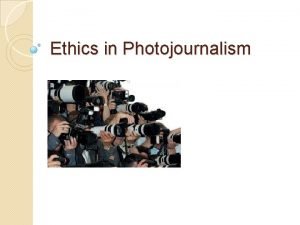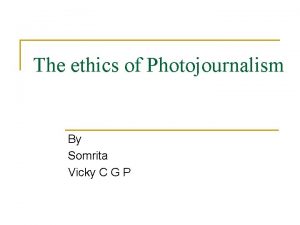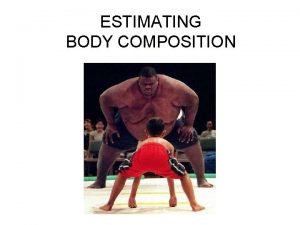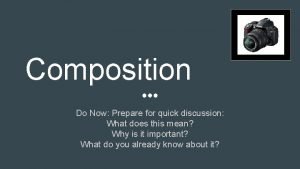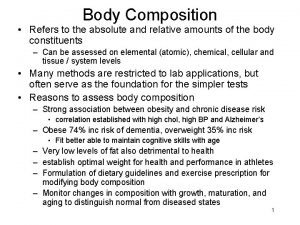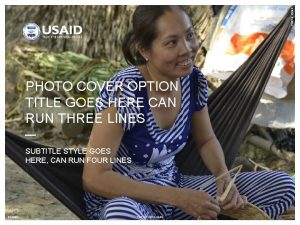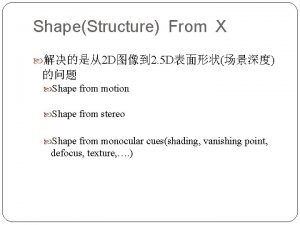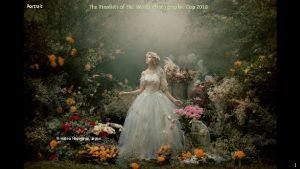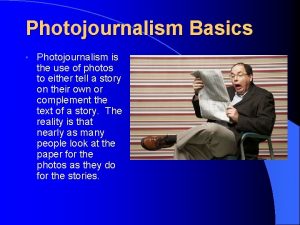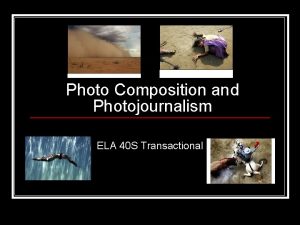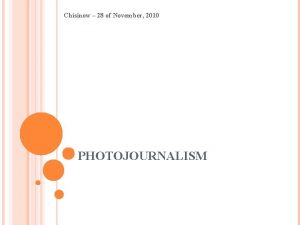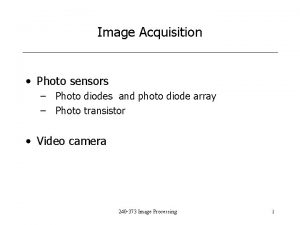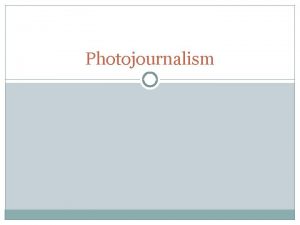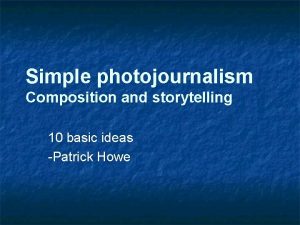Photo Composition Photojournalism What is composition Composition refers









































- Slides: 41

Photo Composition Photojournalism

What is composition? Composition refers to the way a photo is constructed or planned to make the biggest possible impact. Composition rules are ingredients that a photographer may use, but just like a chef wouldn’t use all of the ingredients in his pantry in one meal, a photographer won’t use every composition technique in one photograph.

Rule of Thirds • If you divide your picture into a tic-tactoe board, your subject should not be located in the center square Bushra Ghafoor, R. B. Hayes High School

Addie Driskill, Maize (Kan. ) High School

Daisy Marquez, Maize (Kan. ) High School

The PIX Yearbook - Little Rock, Arkansas

Repetition • A repeating pattern works well to emphasize your subject. • A little bit of variance (changing it up) within the repetition is even better.

The Lore Yearbook – Mercy High School

The PIX Yearbook - Little Rock, Arkansas Aysen Tan, Foothill Dragon Press

Shawnee Mission West High School Publications

Angle • If you can change the angle or viewpoint of your photograph, you automatically make it more interesting. • Changing the angle does NOT mean tilting the camera.

Bird’s eye view Bryant High School Publications

Worm’s eye view Bryant High School Publications

Bryant High School Publications

Strong subject (or “filling the frame”) • Photos should have a strong, dominant focal point and/or center of interest. • Keep your background simple • to avoid distractions.

Samantha Terrell, Maize (Kan. ) High School

Bryant High School Publications

The PIX Yearbook - Little Rock, Arkansas

Framing • Use natural elements to create a frame or border around the subject of the photo, so your audience knows exactly what your focus is.

Aysen Tan, Foothill Dragon Press

Molly Johnson, Blue Valley High School

The PIX Yearbook - Little Rock, Arkansas

Leading lines • Lines in a photo direct a viewer’s focus to the photo’s subject.

Shawnee Mission South High School Publications

The PIX Yearbook - Little Rock, Arkansas

Bryant High School Publications

Selective focus • When a photographer narrows a picture’s depth of field so that only part of the picture is in focus, it draws attention to that particular area. (Combine this with rule of thirds to create an awesome photo!)

Aysen Tan, Foothill Dragon Press

Brittani Casement, Maize (Kan. ) High School

The PIX Yearbook - Little Rock, Arkansas

Photocomposition errors (Photos submitted by Rutherford B. Hayes High School students)

Error #1: Mergers • This error occurs when two objects in a photo overlap strangely and therefore appear to be connected.

(In this photo, the cheerleader holding the “D” sign and the one standing in front of her are easily confused because their arms appear to be connected. )

Error #2: Intrusions • This error occurs when objects intrude onto the edge of photograph unintentionally, which causes a distraction to the main subject.

(This could be a really pretty photo, but there is a hand right in front of the subject’s face. )

Error #3: Bright Spots/Holes • Bright spots are unintentionally bright or washed out areas of a photograph. • Holes are unintentionally dark areas of a photograph.

(The basketball player’s jersey blends in with the mat on the wall, which hurts the visual appeal of the photo. )

Error #4: Cropping of body parts • This error is exactly what it sounds like. • When a photo cuts off small amounts of someone’s body, it looks unintentional or awkward or unnatural.

Cutting off the wrestlers’ feet at the ankles disrupts the visual effect of the image. )

Error #5: Directional Errors • This error occurs when a subject is facing the edge of the photo rather than the middle of the photo. • There isn’t “room” for the subject to look or move.

 Composition refers to
Composition refers to What is photojournalism
What is photojournalism Cutlines for photos
Cutlines for photos Modern photojournalism
Modern photojournalism Photojournalism code of ethics
Photojournalism code of ethics Principles of photojournalism
Principles of photojournalism Photojournalism jobs
Photojournalism jobs Photojournalism rules
Photojournalism rules Photojournalism rules
Photojournalism rules Father of photojournalism
Father of photojournalism History of photojournalism
History of photojournalism Photojournalism jobs
Photojournalism jobs Biepicondylar diameter
Biepicondylar diameter In a work of art the word composition refers to
In a work of art the word composition refers to Body composition refers to the relative amount of
Body composition refers to the relative amount of Endomoph
Endomoph Composition refers to
Composition refers to Sclérodermie photo visage
Sclérodermie photo visage Photo goes here
Photo goes here Look at these pictures and answer the questions below
Look at these pictures and answer the questions below Perifricos
Perifricos This photo by unknown author is licensed
This photo by unknown author is licensed Taboo marketing
Taboo marketing Solve maths by photo
Solve maths by photo Nrega board image odisha
Nrega board image odisha Translate
Translate .the school is ...the post office
.the school is ...the post office Aga khan museum photo permit
Aga khan museum photo permit Name calling commercials examples
Name calling commercials examples Photo caption
Photo caption Picnik photoshop
Picnik photoshop What does this photo mean
What does this photo mean Camera parameter
Camera parameter What is corium
What is corium Langston hughes i too poem analysis
Langston hughes i too poem analysis Reading strategies essay
Reading strategies essay Encoche corticale
Encoche corticale The white man's burden cartoon analysis
The white man's burden cartoon analysis There are photos from your photo album впр
There are photos from your photo album впр Andreas varro art
Andreas varro art Meditating photo
Meditating photo Photo caption
Photo caption

